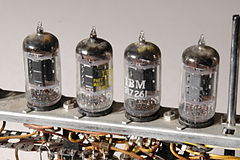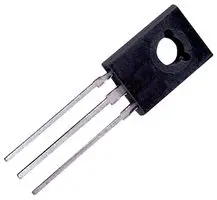Generations of Computers
The history of computer development is often discussed in terms of different generations of computers as listed below.
-
- First-generation computers
- Second-generation computers
- Third-generation computers
- Fourth-generation computers
- Fifth-generation computers
First Generation Computers
The vacuum tube technology was implemented in these computers for calculation, storage, and control. As a result, these computers were also known as vacuum tube computers or thermionic valve computers. Some examples of first-generation computers are ENIAC, EDVAC, EDSAC, and UNIVAC.

Advantages
-
- Fastest computing devices of that time.
- Able to execute complex mathematical problems in an efficient manner.
Disadvantages
-
- These computers were not very easy to program being machine-dependent.
- They were not very flexible in running different types of applications as designed for special purposes.
- Because of the vacuum tube technology, these computers were enormous and unwieldy, and they needed to be kept cold.
- They could only run one program at a time and were therefore inefficient.
- They produced a lot of heat and were therefore prone to hardware failures.
Second Generation Computers
The basic logic circuits in these computers are built with transistors rather than vacuum tubes. A transistor is a semiconductor device that increases the power of incoming impulses while maintaining the original signal's form. PDP-8, IBM1401, and IBM 7090 are examples of second-generation computers.

Advantages
-
- They were the world's fastest computing machines at that time.
- Because assembly language is used, programming is simple.
- Computing equipment that are small and light in weight.
- In order to carry out activities, relatively little electricity was required.
Disadvantages
-
- The input and output media for these computers were not significantly upgraded.
- It must be kept in an air-conditioned environment.
- Very expensive and beyond the reach of home users.
- Being special-purpose computers, they could execute only specific applications.
Third Generation Computers
The use of Integrated Circuits was a significant feature of third-generation computer systems (ICs). ICs are circuits that incorporate electronic components including transistors, resistors, capacitors, and other components onto a single tiny silicon chip. Some examples of third-generation computers are NCR 395. B6500, IBM 370, PDP II and CDC 7600.
Advantages
-
- These computers' computation times were commonly measured in nanoseconds, making them the fastest computing machines.
- Easily transportable because of their small size.
- They used high-level languages which is machine-independent and hence very easy to use
- Easily installed and required less space.
- Being able to execute any type of application (business and scientific) these were considered general-purpose computers.
Disadvantages
-
- Very less storage capacity.
- Degraded performance while executing complex computations because of the small storage capacity.
- Very expensive.
Fourth Generation Computers
Progress in LSI and VLSI technology led to the invention of the microprocessor, which became the fourth-generation computer's most distinguishing feature. LSI and VISI technology made it possible to put thousands of transistors onto a single tiny silicon chip. A microprocessor is a single chip that contains all of the components of a computer, including the CPU, memory, and I/O controllers. Intel 386, Intel 486, and Pentium are some of the more popular later microprocessors. Some of the examples of fourth-generation computers are IBM PC. IBM PC/AT. Apple and CRAY-1.
Advantages
-
- They were small, cheap, compact, and powerful thanks to LSI and VESI technologies.
- Great storage capacity, high reliability, and low maintenance requirements
- With the emergence of GUIs and interactive VO devices, a user-friendly environment was created. Because of the usage of high-level languages, the programs produced on these computers were very portable, adaptable, and suitable for a wide range of applications.
- It just used a small amount of power to run.
Disadvantages
-
-
The soldering of LSI and VISI chips on the wiring board was complicated
-
Still dependent on the instructions given by the programmer.
-
Fifth Generation Computers
Fifth-generation computers are based on the Ultra Large Scale Integration (ULSD) technology that allows almost ten million electronic components to be fabricated on one small chip.
Advantages
-
- faster, cheaper, and most efficient computers till date.
- They are able to execute a large number of applications at the same time and that too at a very high speed.
- The use of ULSI technology helps in decreasing the size of these computers to a large extent.
- very comfortable to use because of the several additional multimedia features. versatile for communications and resource sharing.
Disadvantage
-
- They are not provided with an intelligent program that could guide them in performing different operatic